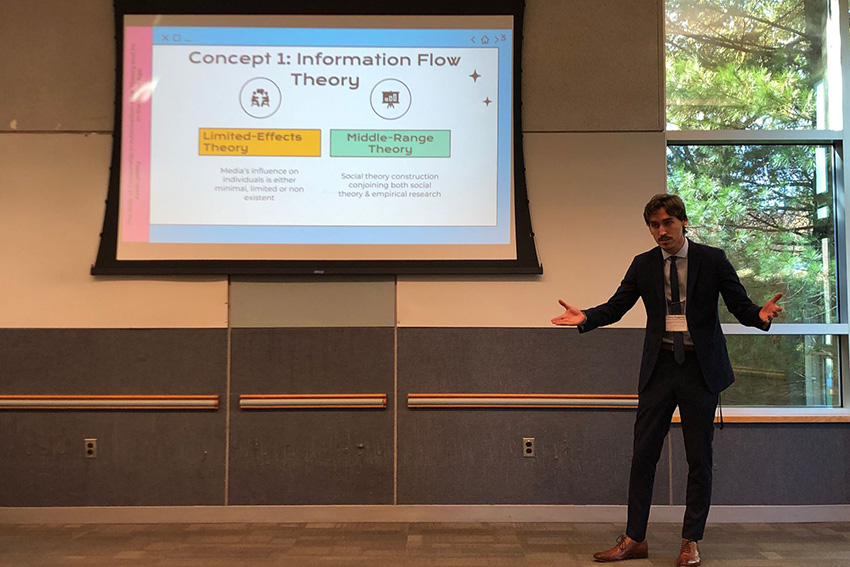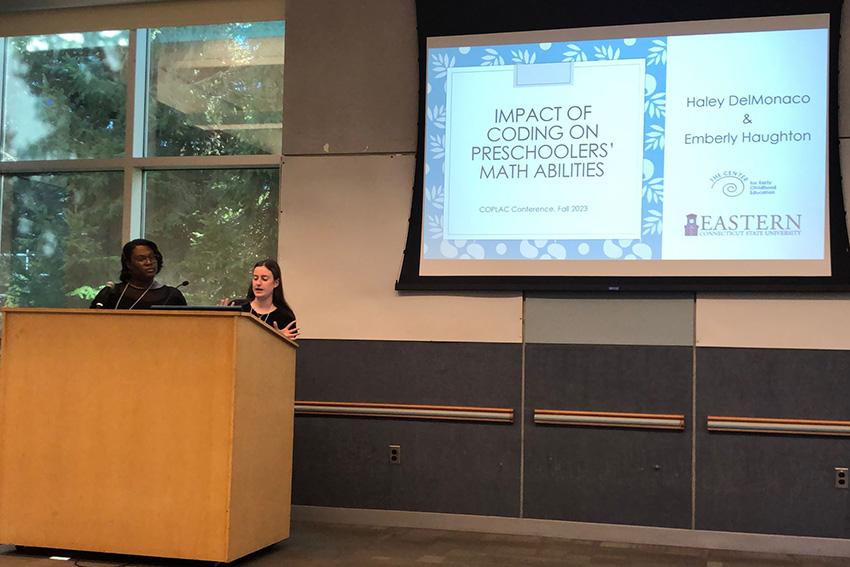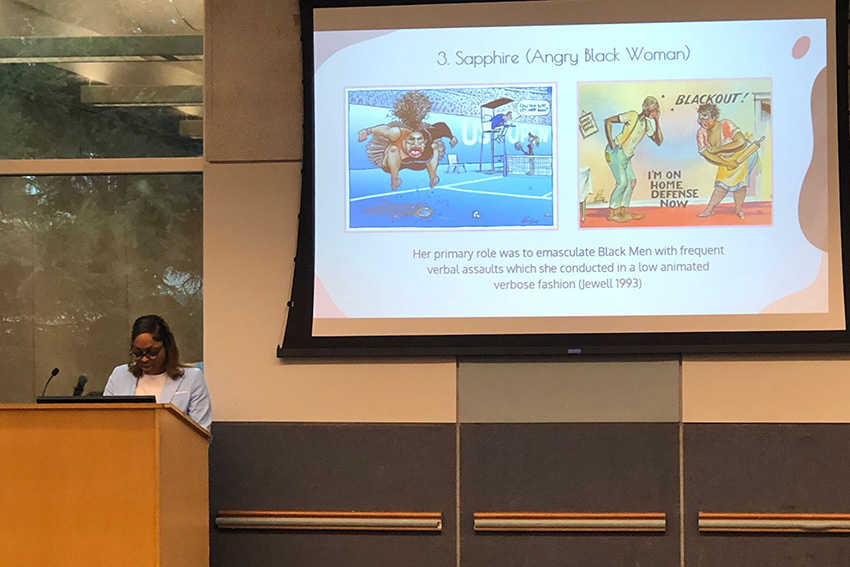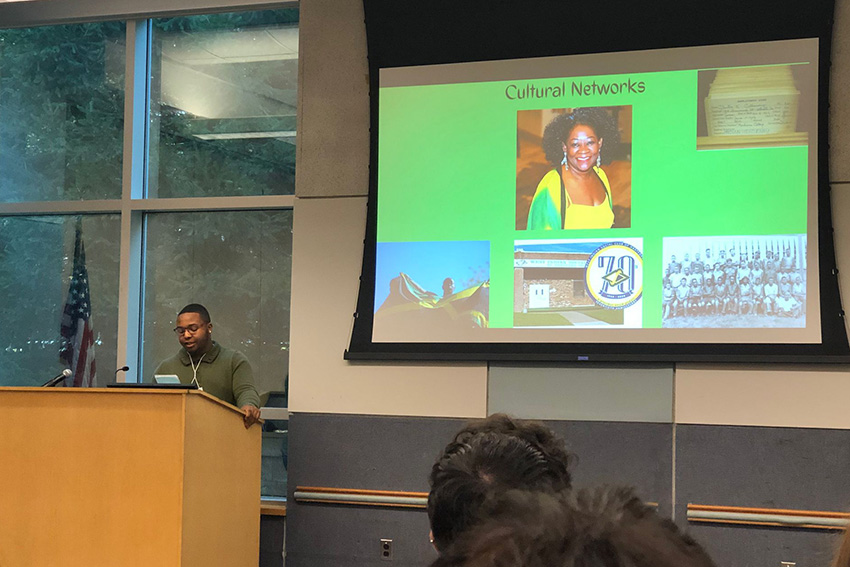- Apply
- Visit
- Request Info
- Give
Eastern represents at regional liberal arts conference
Written by Marcus Grant
Published on November 07, 2023
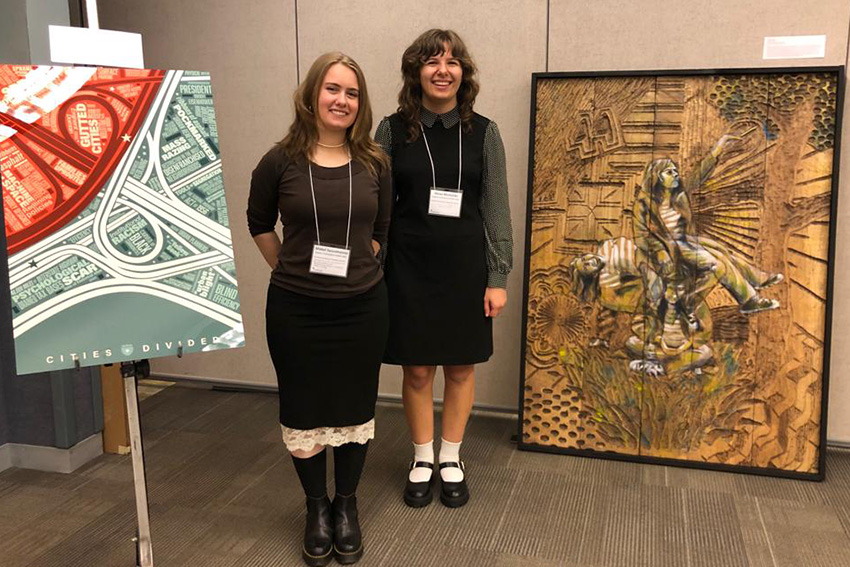
Fifteen Eastern Connecticut State University students made the long drive to Mahwah, NJ, on Oct. 27 to present their research on topics ranging from history to coding. The presentations at the Council of Public Liberal Arts Colleges Northeastern Conference demonstrated the hard work of the students and Eastern’s support of undergraduate research.
“Eastern places a high value on creating meaningful undergraduate research opportunities for our students,” said Dean of Arts and Sciences Emily Todd. “We know that it can be transformative for students to pursue their own research questions and create their own work, and it's especially exciting for them to be able to share that work with others.”
“It was fantastic to see these presentations,” said sociology Professor Nicholas Simon. “You could feel the passion the students had for each of their topics. They were intellectually curious. They went to the presentations (done by students from other universities) and asked them thoughtfully about their work and the impact it would have on others.”
Sudha Swaminathan, professor of early childhood education, said, “They were poised and knew their content in and out. The best part by far was after their presentations were done and they had to answer questions. This could not be anticipated or prepared in advance, but not one student faltered. They appreciated the question, responded clearly and appropriately, and placed their presentation within the larger framework of the question.”
Among the students was English major Samantha Vertucci, who stepped outside of her discipline to present work on psychology. In her talk, titled “The Two Waldens: Henry David Thoreau’s American Transcendentalism and B. F. Skinner’s Radical Behaviorism,” she analyzed how Thoreau and Skinner had a mutualistic relationship of credit and relevance, despite being a century apart in their writing.
“This idea came from the course ‘Great Ideas’ that I took my freshman year when I noticed the connection while studying Skinner,” Vertucci said. “I talked to my professor, Dr. (James) Diller, about it and he asked me to pursue an independent study.”
Vertucci did a poster presentation at Eastern’s CREATE conference last semester but marked this as her first oral presentation centered around her work.
“I found the crowd there really supportive and reassuring, and they asked incredible questions,” she said. “I really couldn't have asked for a better introductory experience to the world of presenting research in this way.”
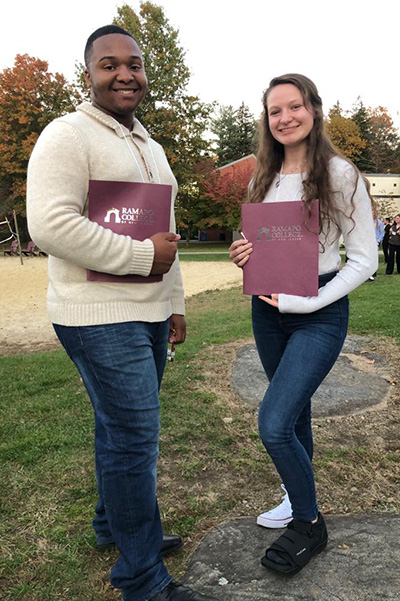
History and elementary education major Eugene Bertrand presented his work, “The Influence of Jamaican Immigration on Greater Hartford's Cultural and Political History.” His work, inspired by his own Jamaican background, argued that Jamaican immigrants successfully integrated into Connecticut and became a part of the Greater Hartford culture and maintained a goal of uniting West Indians and African Americans to create a greater community.
He said that despite tensions between Jamaicans and African Americans, the two groups were able to “stand in solidarity with one another and understand that by presenting a united front, there was more to achieve.” They did this by actively engaging in politics and creating new cultural communities through powerful and effective support networks that included social organizations and communities of faith, he said.
“Being around curious and ambitious scholars, I felt more confident in my ability to present amongst others,” Bertrand said of the conference. “I think that others responding to my work is of the upmost importance. Being able to defend your own research and receiving feedback after doing so is a phenomenal way of instilling academic confidence.”
Music major Jacob Wurst, in his presentation “Progressive Arabic Music: Subversive Attitudes and Musical Genres Surrounding the Islamosphere,” selected popular songs from the Arabic region and contextualized how they divert from the expectations of both their native cultures and outside cultures. The project emerged from his “Intro to Ethnomusicology” course at Eastern, from which he began to work independently based off his interests.
“I hoped to illustrate the diversity which could be demonstrated in music from this part of the world,” he said.
Ashley Fischer, a theatre major, shared her projection designs in her presentation titled, “Projection Media Design for ‘The Nether’ Theatrical Production.” She explained the creative choices she made in deciding which images, videos and special effects should be projected onstage. Her work supported the play in ways such as showing location, helping transition from scene to scene, providing further context for the play's themes and underscoring the emotions of the characters onstage.
“Having others respond to your work is really validating,” she said. “We get caught up in our own heads sometimes and judge ourselves too harshly, but getting active responses and feedback from others was super helpful. It renewed my passion for the project and made me excited to continue working.”
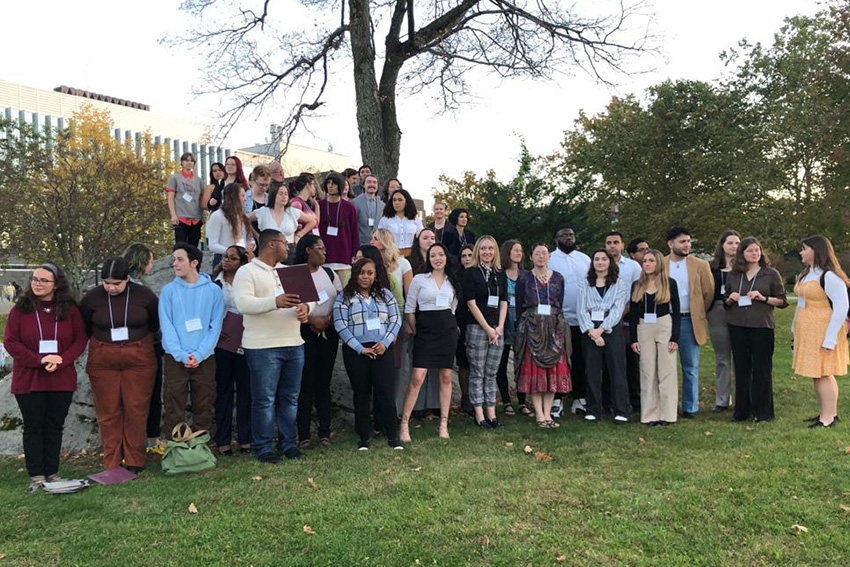
Regardless of their discipline, the Eastern students were excited to present their findings to others and to hear what other students and faculty thought of the work they did. Throughout the conference, they met students from other universities with similar interests, some exchanging contact information or reading materials that might be useful for future exploration.
“Academia is something that I feel needs to be social,” said Wurst. “Doing the research for a big project is crucial, presenting and receiving questions and feedback for said work is even more so, as it gives scholars the opportunity to fill in the holes to the bigger picture of knowledge. As I aim to be a better student, listening to others' opinions and providing my own helps me further understand how complex and fascinating human knowledge can be.”
Vertucci said, “We learn because we love to, and this was a really fantastic reminder of that.”
“Undergraduate research in a liberal arts setting brings on an additional interdisciplinary lens to critical thinking,” Professor Swaminathan said. “Research in the undergraduate years also directly prepares students for applications of their content, to improve practices, to offer potential solutions, to broaden our understanding of topics.”
“I am proud of how thoroughly our students prepared for the conference –- thanks to careful mentoring by their faculty –- and how well they represented Eastern at the conference,” said Dean Todd.



